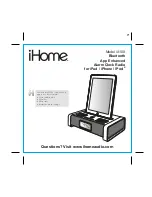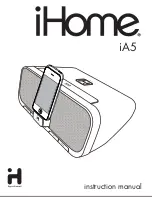
Nixie Tube Clock ‘Halo’
Issue 3 (01 Nov 2018)
www.pvelectronics.co.uk
- 28 -
8. USING A RADIO FREQUENCY TIME RECEIVER OR GPS RECEIVER
The clock can automatically synchronise time from DCF (Europe) and MSF
(UK) long wave time transmitters.
The clock can also receive time from a GPS receiver that transmits
information using NMEA-0183 protocol, using the $GPRMC sentence.
8.1 Configuring for RFT or GPS Synchronisation.
Set parameter 12:
1: DCF
3: MSF
4: GPS
If using GPS, set the baud rate in parameter (13)
Set parameters 14 and 15 for the hours and minutes your time zone is
offset from the synchronisation source. This is usually only whole
hours. Examples:
o
UK is 1 hour offset from the time transmitted by the DCF
transmitter
o
France has no offset from the time transmitted by the DCF
transmitter
Set parameter (16) to identify whether the offset is minus (0) or
positive (1) of the time source.
If using GPS, parameter (17) acts as a DST bit. Set to 1 during DST
period, and 0 during standard time period.
Set parameter (23) to select between hourly seek and daily seek in
DCF / MSF modes.
If you have selected daily seek, use parameter (24) to set the time of
the daily seek in DCF / MSF modes.
If you intend to place the RFT receiver module closer to the clock PCB
than 6 ft / 2 metres, the clock will need to disable HV and switch off
the tubes for time seek, otherwise the switch-mode power supply will
prevent reception. Select blanking during time seek by setting
parameter (25) to 1. Leave as 0 to keep tubes lit during time seek.







































